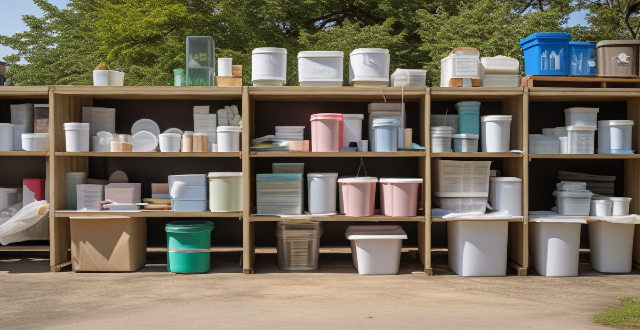Recycling household items is crucial for reducing waste and conserving resources. Best practices include knowing local guidelines, cleaning items, flattening cardboard, separating recyclables, using bins properly, donating usable items, composting organic waste, and buying products with recyclable packaging. By following these steps, individuals can contribute to a more sustainable future and reduce their environmental impact.

Best Practices for Recycling Household Items
Recycling household items is an essential practice for reducing waste and conserving natural resources. Here are some best practices to follow:
1. Know Your Local Recycling Guidelines
Every community has its own set of recycling rules. It's important to know what your local recycling program accepts and how it should be prepared before you recycle. This can usually be found on your city or town's website.
2. Clean and Prepare Your Items
Dirty or contaminated recyclables can spoil a whole batch, causing it to be thrown away instead of recycled. Make sure your items are clean and dry before placing them in the recycling bin. This includes rinsing out containers and removing any labels or caps.
3. Flatten Cardboard and Break Down Boxes
Flatten cardboard boxes and break them down to save space in the recycling bin. Remove any plastic packaging or non-recyclable inserts.
4. Separate Recyclables from Non-Recyclables
Not everything can be recycled, so it's important to separate recyclables from non-recyclables. This will prevent contamination and ensure that recyclable materials are not sent to the landfill.
5. Use Recycling Bins Properly
Place your recyclables in the appropriate bins provided by your local recycling program. If there are separate bins for different types of materials (e.g. paper, plastic, glass), make sure to use them correctly.
6. Donate or Sell Usable Items
Before throwing away household items, consider if they can be donated or sold. This extends the life of the item and reduces waste.
7. Compost Organic Waste
Composting is a form of recycling that turns organic waste into nutrient-rich soil. Start a compost pile in your backyard or participate in a community composting program.
8. Buy Products with Recyclable Packaging
When making purchases, choose products with recyclable packaging over those with non-recyclable packaging. This reduces the amount of waste generated in the first place.
By following these best practices, you can contribute to a more sustainable future and reduce your impact on the environment. Remember, every little bit helps!